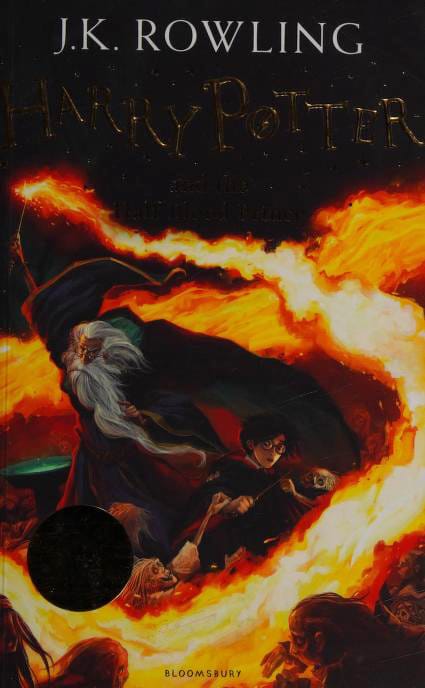Harry Potter and the Half-Blood Prince: In-Depth Review and Analysis
Explore plot, characters and themes of Harry Potter and the Half-Blood Prince and learn why the sixth book is pivotal to J.K. Rowling’s wizarding saga.

Introduction
More than a simple bridge between Order of the Phoenix and Deathly Hallows, Harry Potter and the Half-Blood Prince intensifies the stakes of J.K. Rowling's saga. Released in 2005, the sixth installment blends teenage romance, dark mystery, and looming war with Voldemort. Readers are drawn into a more mature Hogwarts, where potions lessons reveal sinister secrets and alliances shift overnight. This review revisits the novel’s plot, characters, and themes to understand why it remains a fan favorite.
Quick Plot Summary
For the first time since Chamber of Secrets, the story opens outside Harry’s perspective. The Muggle Prime Minister receives a chilling visit from Cornelius Fudge, signaling that Voldemort’s terror is spilling into the non-magical world. Meanwhile, Professor Snape makes an Unbreakable Vow to protect Draco Malfoy. At Hogwarts, Harry inherits an old Potions textbook annotated by the mysterious Half-Blood Prince, earning top marks and Slughorn’s trust. With Dumbledore, he dives into Tom Riddle’s past through Pensieve memories, hunting Horcruxes that anchor Voldemort’s soul. The year ends atop the Astronomy Tower, where Death Eaters invade, Draco hesitates, and Snape casts the fatal curse that kills Dumbledore.
Key Characters and Development
Harry Potter
Harry Potter enters his sixth year carrying trauma from Sirius’s death. Yet he shows sharper intuition, correctly suspecting Draco’s connection to Death Eaters and embracing leadership as Quidditch captain. His blossoming romance with Ginny Weasley illustrates newfound confidence, while private lessons with Dumbledore push him to confront prophecy not as fate, but as a choice he must own.
Severus Snape
Severus Snape dominates the novel’s tension. Rowling finally confirms his allegiance to Voldemort, or so it seems, yet layers enough ambiguity to keep readers guessing. The Half-Blood Prince notes reveal his brilliance, darker impulses, and resentment at Hogwarts bullying. By killing Dumbledore, he cements his villainy in Harry’s eyes, but the tragic complexity hinted through the Unbreakable Vow and Dumbledore’s cryptic trust primes readers for a later reevaluation.
Draco Malfoy
Draco Malfoy evolves from schoolyard bully into tragic pawn. Tasked with murdering Dumbledore under threat to his family, he wrestles with fear and pride all year. His attempts with the Vanishing Cabinet show ingenuity, yet his breakdown in the bathroom exposes a child caught in adult warfare. Draco’s inability to cast Avada Kedavra foreshadows the possibility of redemption.
Central Themes
Love and Sacrifice
Love continues to be Rowling’s ultimate countercurse. Dumbledore’s willingness to die on his own terms, Lily Potter’s lingering protection in Harry’s blood, and Snape’s hidden motivations all underscore love as power. Even teen subplots—Harry and Ginny, Ron and Lavender, Hermione’s jealousy—mirror the messy, vulnerable choices that love demands.
The Nature of Evil
The exploration of Voldemort’s childhood reframes evil as a series of small, conscious refusals of empathy. Through Marvolo Gaunt, young Tom Riddle learns cruelty is strength. The Horcruxes literalize the cost of ripping apart the soul. Readers are challenged to see that monsters are made, not born, and that indifference can nurture darkness.
Coming of Age
Half-Blood Prince is arguably the series’ true coming-of-age novel. Homework and Quidditch share space with war councils in the Burrow. Harry, Ron, and Hermione earn Apparition licenses, brew Felix Felicis, and debate the morality of using the Prince’s spells. Graduation looms, and with Dumbledore gone, the trio must step beyond Hogwarts’s walls into adulthood.
Why the Sixth Book Matters to the Series
The sixth book re-calibrates the series’ trajectory. By revealing Horcruxes, Rowling plants the narrative engine for the finale. Dumbledore’s death removes the mentor archetype, forcing Harry to rely on his own judgment. Snape’s betrayal fractures the trust readers held in Hogwarts’s safety net. In short, Half-Blood Prince destabilizes the wizarding world so the final battle can have genuine stakes.
Reception and Legacy
Upon release, Half-Blood Prince sold nine million copies in 24 hours and won the British Book of the Year award. Critics praised its darker tone and deft foreshadowing, though some parents worried about increased violence. Today, fans revisit the novel for its witty dialogue, gothic atmosphere, and the moral ambiguity that fuels endless debate about Snape. The 2009 film adaptation, while visually stunning, omits key memories, making the book essential reading for full context.
Final Thoughts
Harry Potter and the Half-Blood Prince balances romance, humor, and tragedy with masterful pacing. It deepens lore without drowning in exposition and sets the chessboard for the climactic Deathly Hallows. Whether you’re a first-time reader or returning to Hogwarts, this sixth volume offers rich character studies and thematic depth that only improves with age.



